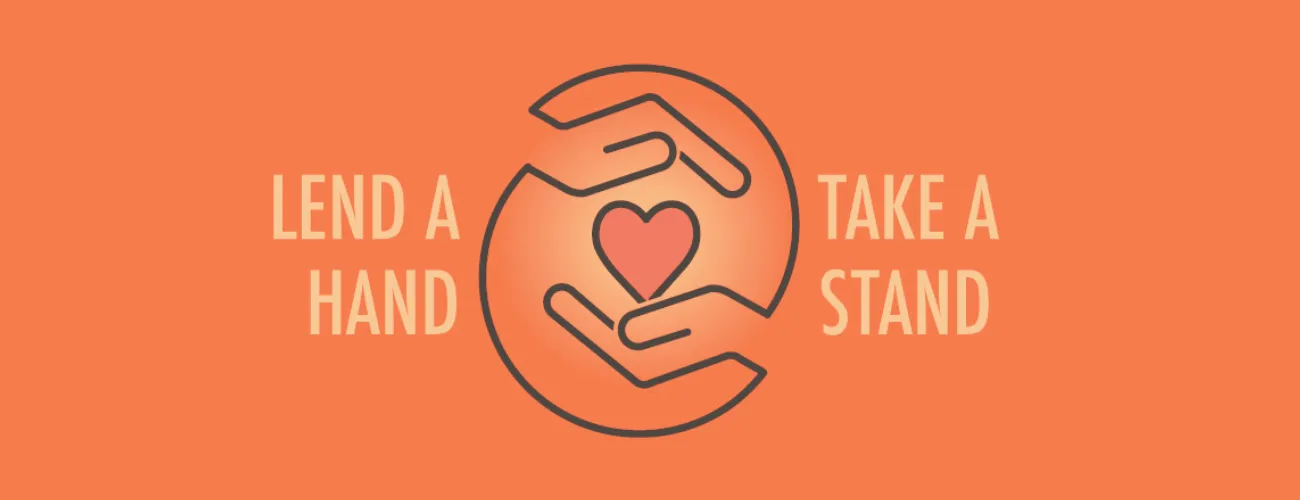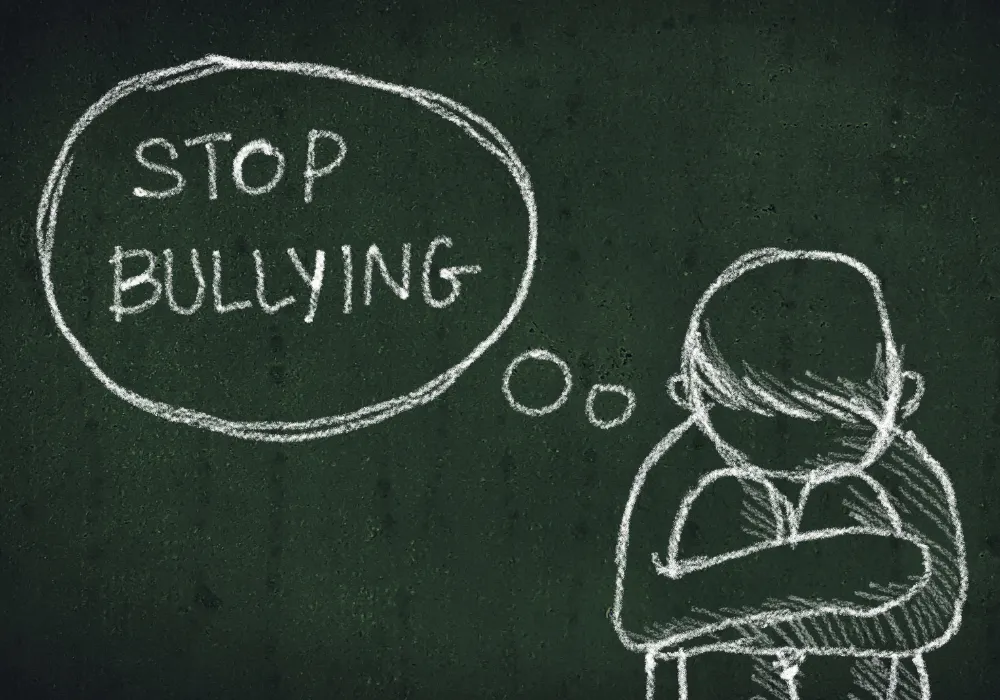
Bullying Prevention
Building a positive and welcoming culture for all is a priority in PWCS. According to the Virginia School Board Association (VSBA):
"Bullying is a significant problem nationwide. It can cause school absenteeism, mental and physical stress, poor school performance, poor self-esteem, and in some cases, school violence. Students who experience bullying are at increased risk for depression, anxiety, sleep difficulties, lower academic achievement, and dropping out of school. Bullying can also happen online. Reports of cyberbullying among public school attending students are highest for middle school (33%), followed by high school (30%), combined schools (20%) and primary schools (5%). School board members, superintendents, teachers, and parents play a critical role in creating a climate where bullying is not tolerated. It has been proven when adults and children stand together, bullying ends."
Educators are encouraged to participate in activities and programs that educate students and families about ways to practice positive conflict resolution and acceptance of others.
Together Against Bullying - Pacer Center
Bullying Prevention in PWCS
PWCS is committed to a school environment in which students are free from bullying. Regulation 733-1: Bullying of Students is provided to ensure appropriate preventative and corrective actions are taken to deal promptly and decisively with reported incidents of bullying.
Virginia Code § 22.1-276.01 defines bullying as “any aggressive and unwanted behavior that is intended to harm, intimidate, or humiliate the victim; involves a real or perceived power imbalance between the aggressor or aggressors and victim; and is repeated over time or causes severe emotional trauma.” Taunts, threats, insults, gossip, humiliation, teasing, pushing, tripping, and hitting are all considered bullying behaviors.
Bullying includes cyber bullying, which involves the transmission, receipt, or display of electronic messages and/or images. Cyberbullying refers to any threats by one student towards another, typically through emails or on websites (e.g., blogs, social media) and electronic communications that support deliberate, hostile, hurtful messages intended to harm others; includes such things as sending mean, vulgar, or threatening messages or images; posting sensitive, private information about another person; pretending to be someone else in order to make that person look bad; and defamatory online personal polling websites. Unacceptable use of technology includes use of technology off school property which has a material effect on the operation or general welfare of the school division, impacts the integrity of the educational process, threatens the safety and welfare of students, staff, or school property, or otherwise invades the rights of students or staff.
Bullying does not include ordinary teasing, horseplay, argument, or peer conflict.
Behavior that does not meet the definition of bullying may still warrant intervention by school administration and may violate other provisions of the PWCS “Code of Behavior” leading to disciplinary consequences.
When students believe they have been a victim of bullying behavior or if parents believe their child is being bullied, the following should occur:
The student and/or parent/guardian shall review Regulation 733-1: Bullying of Students. The regulation outlines the entire process which follows the complaint.
Any student or parent/guardian may initiate a complaint by talking to an administrator or completing a complaint form (Attachment II) and returning this form to a school administrator. (Any staff member can also initiate a complaint on behalf of a student or parent/guardian who reports bullying by talking with an administrator and/or completing a complaint form.)
Assistance with the identification of bullying behaviors is provided in Attachment I, “Bullying Behaviors: Physical or Emotional.”
Bullying Statistics

Bullying is widespread in the United States. Bullying negatively impacts all youth involved including those who are bullied, those who bully others, and those who witness bullying, known as bystanders.
- Bullying is common. About 1 in 5 high school students reported being bullied on school property. More than 1 in 6 high school students reported being bullied electronically in the last year.
- Some youth experience bullying more than others. Nearly 40% of high school students who identify as lesbian, gay, or bisexual and about 33% of those who were not sure of their sexual identity experienced bullying at school or electronically in the last year, compared to 22% of heterosexual high school students. About 30% of female high school students experienced bullying at school or electronically in the last year, compared to about 19% of males. Nearly 29% of white high school students experienced bullying at school or electronically in the last year compared to about 19% of Hispanic and 18% of Black high school students.
- Bullying is a frequent discipline problem. Nearly 14% of public schools report that bullying is a discipline problem occurring daily or at least once a week.
- Reports of bullying are highest in middle schools (28%) followed by high schools (16%), combined schools (12%), and primary schools (9%).
- Reports of cyberbullying are highest in middle schools (33%) followed by high schools (30%), combined schools (20%), and primary schools (5%).
The following statistics are retrieved from the Centers for Disease Control and Prevention.
Bullying in Virginia Statistics
Bullying in Virginia
The following statistics are from the Technical Report of the Virginia Secondary School Climate Survey, 2020 (PDF):
- 32% of students surveyed reported that bullying is a problem at their school, and 4% reported being bullied once or more per week at school this year.
- 35% of students surveyed reported that another student stole something from them.
- 22% of students surveyed reported being physically attacked, pushed, or hit by another student.
- 26% of students surveyed reported being threatened by another student.
- 29% of students told a teacher or another adult at school when they were bullied or harmed at school this year.
Another set of questions asked students about the prevalence of teasing and bullying in their school. Students reported observing that their peers get teased or put down about:
- "Their sexual orientation" (40%)
- "Their race or ethnicity" (32%)
- "Their clothing or physical appearance" (61%)
- "Sexual topics" (51%)
Family & Youth Resources
Bullying Brief - U.S. Department of Justice (PDF)
Bullying Prevention - Virginia Department of Education
Centers for Disease Control and Prevention
Effects of Cyberbullying: How School Counselors Combat Bullying Today
Parenting, Media, and Everything in Between (Cyberbullying Information and Resources for Families) - Common Sense Media®
Parent Resources - Cyberbullying Research Center
Positive Behavioral Intervention & Supports
- Bullying Prevention in PBIS: Expect Respect (Middle & High School Level)
- Bully Prevention Manual (Elementary Level)
School Wide Bullying Prevention and School Counselors
StopBullying.gov
Suicide and Bullying: Issue Brief (SPRC) (PDF)
What Teens Can Do - StopBullying.gov
What Parents Should Know About Bullying - Pacer's National Bullying Prevention Center
VA Department of Health - Youth Violence and Bullying PreventionBullying Prevention Tools & Resources
Positive Behavioral Intervention & Supports
- Bullying Prevention in PBIS: Expect Respect (Middle & High School Level)
- Bully Prevention Manual (Elementary Level)
Effects of Cyberbullying: How School Counselors Combat Bullying Today
School Wide Bullying Prevention and School Counselors
VSBA Bullying Prevention Month - October 2022, Virginia School Boards Association (PDF)
Student Activity Kit (PDF) - PACER's National Bullying Prevention Center
Student Activity Book (PDF) -PACER's National Bullying Prevention Center
Bullying Prevention Activities
Student Activity Kit (PDF) - PACER's National Bullying Prevention Center
Student Activity Book (PDF) - PACER's National Bullying Prevention Center
Anti-bullying post it notes take over halls at Springfield High School
Be an Upstander -
Prevent Bullying
The Bystander Effect -
The Science of Empathy
